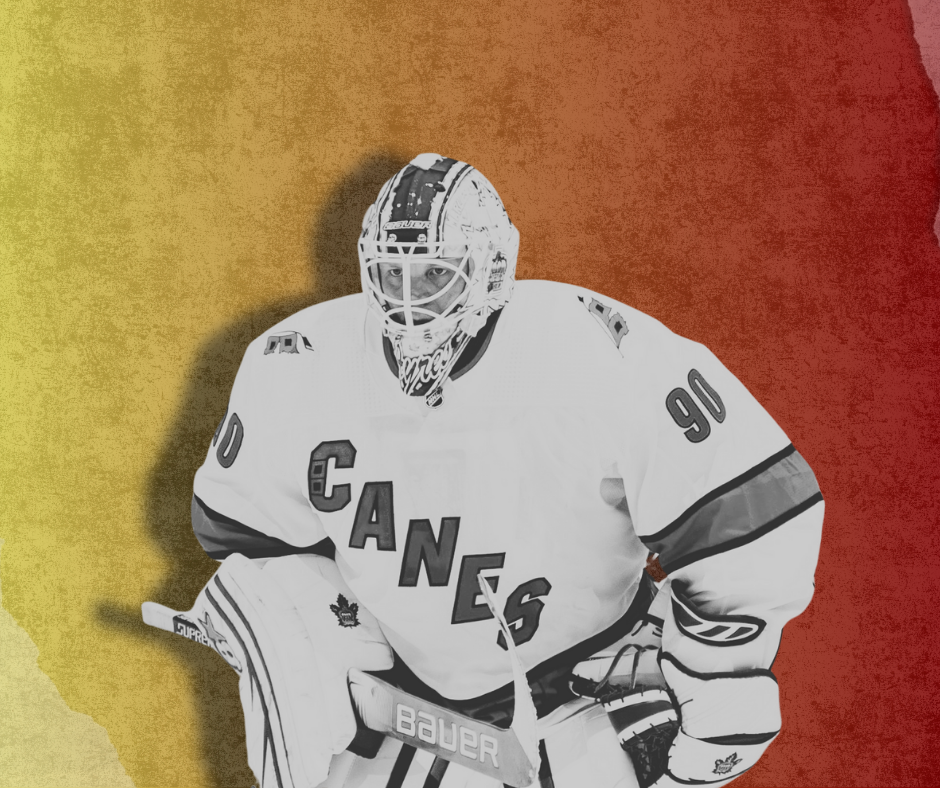It was February 22, 2020, and Scotiabank Arena was buzzing with excitement. The hometown Maple Leafs were set to face off against the Carolina Hurricanes. In the crowd sat a 42-year-old man named David Ayers, who looked like any other fan. Few could have guessed that by the end of the night he would be remembered around the world as one of the most unlikely heroes in NHL history.
Ayers was not a professional hockey player. By day, he worked as a building operator at Coca-Cola Coliseum, home of the Toronto Marlies, the AHL affiliate of the Maple Leafs. He was often seen maintaining the ice and even driving the Zamboni between periods. On occasion, he would take shots in practice, filling in as an extra goalie. That small connection to the Leafs would eventually become his ticket to hockey immortality.
By the end of that February night, Ayers would not only be known by Maple Leafs fans but by the entire sports world. He would return to his day job the next morning, but he would always be remembered as the man who stepped out of the stands, into an NHL crease, and left with a win.
The Role of the EBUG
To understand Ayers’ story, you need to understand the role of the Emergency Backup Goalie, better known as the EBUG. NHL rules allow for an EBUG to be used only in the rarest of situations, when both of a team’s rostered goalies are injured and cannot continue.
The EBUG must meet a few criteria:
- They cannot be a professional hockey player under contract.
- They cannot be a direct employee of one team, since they must be available for either side.
- When called upon, they sign a one-day contract.
- They may not receive compensation, though they do keep their jersey.
In almost all cases, the EBUG simply sits on the bench as an emergency precaution. Very rarely do they actually take the ice. Only six times in NHL history has an EBUG logged official playing time, making it one of the rarest occurrences in all of professional sports.
When the Call Came
The Hurricanes’ night unraveled quickly. Just six minutes into the first period, starting goaltender James Reimer was injured after facing only one shot. Backup Petr Mrazek took over, and Ayers continued to watch from the media room.
Late in the second period, disaster struck again. Mrazek collided hard with a Leafs skater and was forced out of the game. With no other options, the Hurricanes turned to David Ayers. He walked down the tunnel wearing his Marlies mask, a freshly printed Hurricanes jersey with his name on the back, and stepped onto the ice with Carolina holding a 4-1 lead.
His baptism by fire was immediate. John Tavares scored on the first shot Ayers faced, slipping a wrister under his pad. Moments later, Pierre Engvall buried a rebound, cutting the lead to 4-3. The Leafs smelled blood, the Hurricanes looked rattled, and Ayers seemed destined to become a punchline.
But something changed in the third period. Ayers settled in, making six saves against one of the league’s most dangerous offenses led by Auston Matthews. Every stop drew louder cheers from the Hurricanes bench and stunned silence from the Toronto crowd. When the final buzzer sounded, Ayers had preserved the win. He played over 28 minutes, posted an .800 save percentage, and became the oldest goalie to ever record a win in the NHL.
The Accountant Who Stole the Show
Ayers’ story is not the only one of its kind. On March 29, 2018, at the United Center in Chicago, accountant Scott Foster was pressed into service as the Blackhawks’ EBUG. Chicago had already lost two goaltenders that night when rookie Collin Delia went down with an injury in the third period.
Unlike Ayers, Foster entered with the home crowd behind him. He stopped all seven shots he faced, shutting down the Winnipeg Jets in a 6–2 win. While he was not credited with the victory, Foster earned first-star honors and a place in NHL lore. His perfect .1000 save percentage remains one of the quirkiest statistical lines in league history.
Why the EBUG Captures Our Imagination
The beauty of the EBUG lies in its sheer unpredictability. Imagine being asked to jump into a professional game with no warning, facing down players making millions of dollars a year, all while you hold a day job far removed from the spotlight. And you get paid with a jersey.
For fans, these stories feel like the ultimate sports fantasy: the chance that anyone in the stands could be called to play, even if only for one surreal night. The EBUG system embodies hockey’s charm and unpredictability, reminding us why sports capture our imagination in the first place.
The End of an Era?
Unfortunately, the days of the fan-in-the-stands EBUG may be numbered. Under the NHL’s next collective bargaining agreement, beginning with the 2026–27 season, each team will carry a professional emergency backup who will travel with them.
From a competitive standpoint, this makes sense. Teams want consistency, security, and fairness when it comes to player safety. But it also means we may never again see a Zamboni driver or an accountant stealing the show in front of thousands.
A Legacy of Legends
David Ayers will never play another NHL minute. Neither will Scott Foster. But both men carved out a permanent place in the sport’s history books. Ayers left with a 1-0 record and a story that will be told for generations. Foster left with perfection on paper and one of the loudest ovations the United Center has ever produced.
Before the new system takes effect, there is still room for magic. Maybe it will be a beer-league goalie used to midnight skates, or an accountant more familiar with tax returns than slap shots.
If that call ever comes, the hockey world will once again stop and watch, waiting to see if an ordinary person can turn one night into an unforgettable story.
Want more Sandman? Come connect with us here at sandmansports.com/onestopshop





